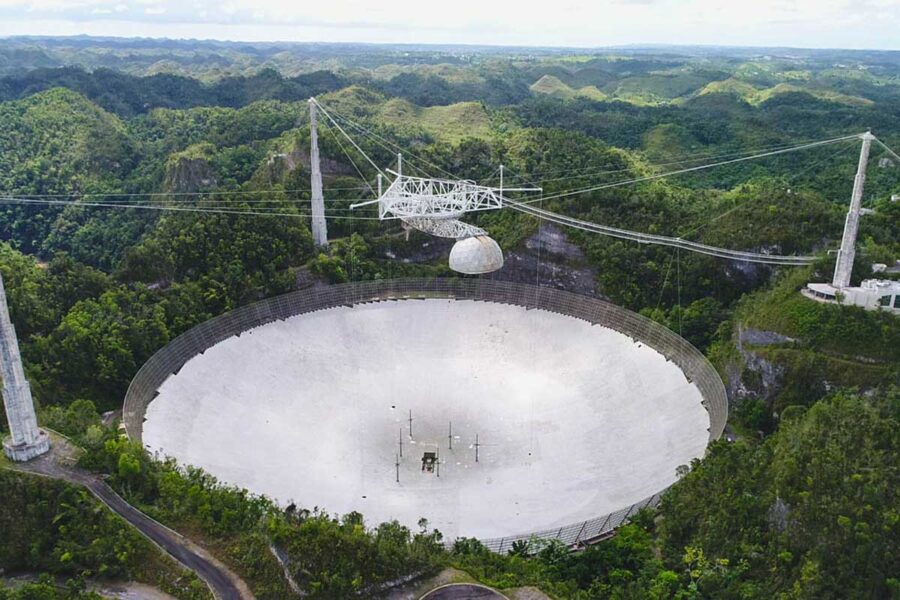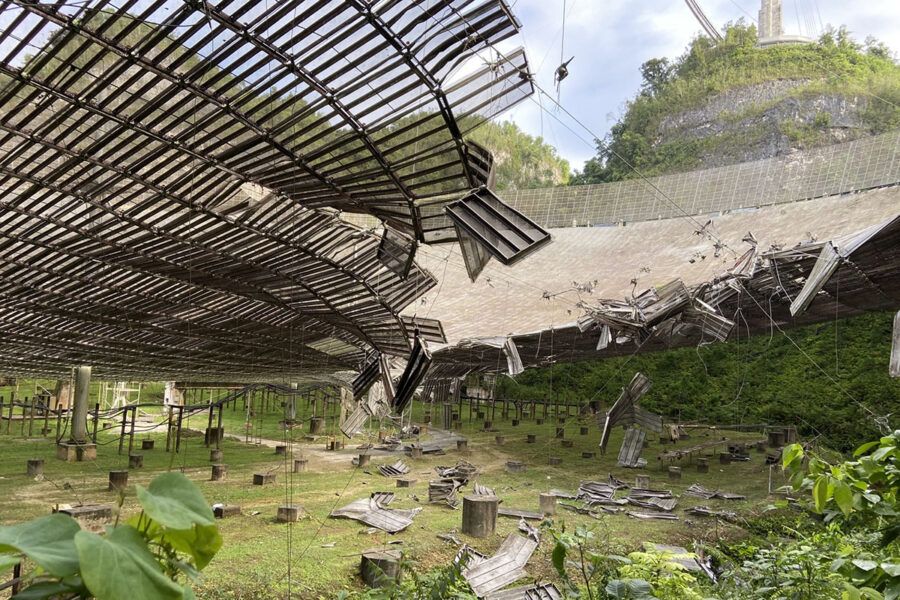Engineers are looking at stabilizing the dish, as the Arecibo Observatory has suffered a second cable failure.

UCF / Arecibo / NSF
The Arecibo radio observatory has had a rough time of it in the past few years.
The most recent incident occurred on Friday, November 6th, at 7:39 p.m. local time, when a second support cable broke. Unlike the first cable failure on August 10th, this one did not slip out of its support socket. Both cables were, however, affixed to the same support tower. The failure also damaged several nearby cables and the main dish below. No one was injured in the incident. Engineers are onsite this week, assessing the damage and looking at how best to move forward.
“This is certainly not what we wanted to see, but the important thing is that no one got hurt,” said director Francisco Cordova in a recent press release. “We have been thoughtful in our evaluation and prioritized safety in planning for repairs that were supposed to begin Tuesday. We are evaluating the situation with our experts and hope to have more to share soon.”
At this point, the team has not identified a clear reason for the failure, but it’s suspected that the first cable failure put additional strain on the remaining support cables. The team is using remote cameras and drones to assess the current state of the structure.
Arecibo is currently managed by the University of Central Florida in partnership with the Universidad Ana G. Méndez and Yang Enterprises under the auspices of the U.S. National Science Foundation, which will fund the observatory until at least 2023.

UCF / NSF
The current strategy is for the team to install temporary steel reinforcements, which will relieve some of the strain on the structure. Two three-inch-thick replacement cables are currently on order.
Most of the auxiliary cables and the steerable Gregorian dome were added during an upgrade to the facility in 1997 and were expected to last 50 years. New observations at Arecibo came to a halt in August when the first cable came down. The team is nevertheless pushing ahead with new research by going through data collected by the dish during previous observations.

Arecibo / NASA / NSF
Arecibo: Past & Future
Built over a large natural sinkhole, the partially steerable, 1,001-foot (305-meter) radio dish started radio observations in 1963 and was the largest filled-aperture radio telescope in the world until China brought the Five-hundred meter Aperture, Spherical Telescope antenna online in 2016. Arecibo has been used to ping near-Earth asteroids, map out pulsars and extra-galactic radio sources, and search for and send SETI signals. The facility is also used for radar and atmospheric observations. The radio observatory even turns up in the movies Golden Eye and Contact.
In over a half century of operation, Arecibo has weathered financial woes, survived a direct hit from Hurricane Maria in 2017, and even experienced earthquakes.
Certainly, the failure of a second cable is not good news, but with any luck, the team can assess the damage this week, and the historic observatory can soon see "radio light" once again.
 0
0










Comments
You must be logged in to post a comment.